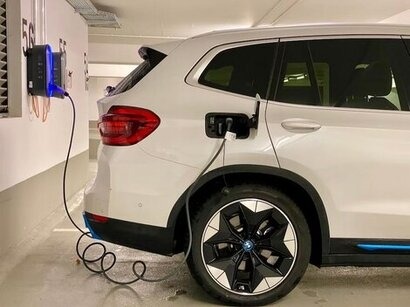
The average cost of home charging only increased by 1p in the last quarter, to 31p per kWh, while public charging tariffs increased by 4p, to 74p per kWh. As a consequence, the average pence per mile cost for driving an electric car stayed flat, at 9p per mile, while the average cost for an electric van rose only 1p, to 14p, compared to Autumn last year.
It meant that the vast majority of journeys worked out higher in cost than the Advisory Electricity Rate, which although increased to 8p during the period still lagged behind the real outlay for most business journeys.
Mina’s research, based on more than 125,000 charges in the three months to February showed the energy market, although still charging high rates for electricity, has not experienced major inflation despite commentators warning that winter could see further rises as demand grew for heating and power in the colder months.
“The cap on domestic electricity has certainly helped stabilise prices for home charging” Mina’s CEO Ashley Tate said. “But businesses such as charge point operators, who are not subject to the cap, have also seen prices levelling out. And while we’d like to see these costs coming down over the summer months, at least companies running electric vehicles can at last plan costs with more certainty than before. In fact, our research in the report shows that electric cars and vans are still on the whole extremely cost effective when compared to petrol and diesel – even though the cost of fuel has reduced in the past few months.”
The latest report also contains data on home charging habits. It shows when drivers plug in, when they charge, the amount of power they need, and also gives insights into how the domestic grid will cope as the number of EVs swells.
“We’re able to track exactly when drivers plug in at home, and measure their consumption too” added Mr Tate. “So we’re able to understand demand really accurately, and when you overlay factors such as behaviour and need against grid capacity, a really clear, and very positive, picture emerges about the future of domestic charging.”
Also looked at in the report is the higher Advisory Electricity Rate (AER), and the new process for calculating it. The report found that while the amount a driver can claim has increased, the single figure for such a complex area of driving costs is still not suitable. It found that by using the AER, in:
For 1 in 5 charges the business is paying too much
For 4 in 5 charges the driver is out of pocket
“Although the AER has been revised in the hope it will more accurately reflect drivers’ charging costs, and as our data shows, it aligns with a few more journeys than before - albeit still a small percentage” said Mr Tate. “The problem is it will never be fair, and now more businesses are losing out if they use it. No matter how much effort goes into producing this single figure, somebody, somewhere is usually on the wrong end of it.”
For additional information:

